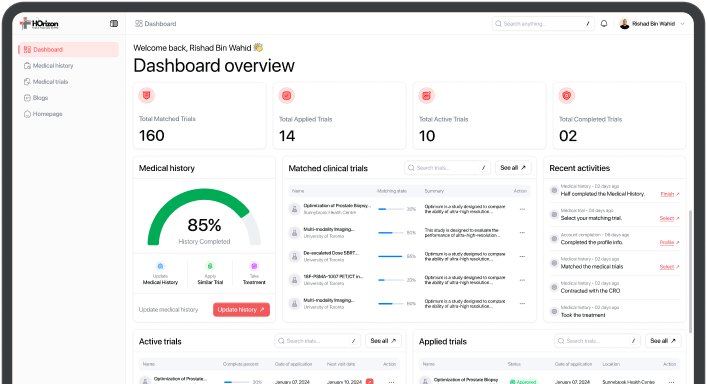
A Study of Safety and Efficacy of KFA115 Alone and KFA115 in Combination With Tislelizumab in Patients With Select Advanced Cancers
Contact information
Novartis Pharmaceuticals
Novartis Investigative Site
Toronto, Ontario, Canada
Basic information
Male, Female, Other
18-30, 31-40, 41-50, 51-60, 61-70, Over 70 Age
220 Enrollment
Cancer Lung Cancer
Trial Details
Brief Summary
The purpose of this study is to characterize the safety and tolerability of KFA115 and KFA115 in combination with tislelizumab in patients with select advanced cancers, and to identify the maximum tolerated dose and/or recommended dose.
Official Title
A Phase I, Open-label, Multi-center Study of KFA115 as a Single Agent and in Combination With Tislelizumab in Patients With Select Advanced Cancers
Selection Criteria
Eligibility Inclusion Criteria
-
Non-small cell lung cancer with historic PD-L1 ≥ 1%, as determined locally using a clinically accepted assay. Patients must have experienced benefit from previous anti-PD(L)1-containing therapy for at least 4 months based on investigator-assessed disease stability or response prior to developing documented disease progression.
Renal cell carcinoma, clear cell histology, previously treated with anti-PD(L)1-containing therapy and a VEGF targeted therapy as monotherapy or in combination. Patients should have documented disease progression following anti-PD(L)1-containing therapy.
Cutaneous melanoma, previously treated with anti-PD(L)1-containing therapy. Patients should have documented disease progression following anti-PD(L)1-containing therapy.
Ovarian cancer, high-grade serous histology, naive to anti-PD(L)1 therapy, no more than 3 prior lines of systemic therapy for recurrent/metastatic disease.
Nasopharyngeal carcinoma, non-keratinizing locally advanced recurrent or metastatic, naive to anti-PD(L)1 therapy.
Locally advanced unresectable or metastatic anal cancer (squamous), thymic carcinoma, MSI-H CRC, esophagogastric cancer, mesothelioma, and HNSCC, all naive to anti-PD(L)1 therapy.
Patients must have a site of disease amenable to biopsy, and be a candidate for tumor biopsy according to the treating institution's guidelines. Patient must be willing to undergo a new tumor biopsy at screening, and during therapy on the study, if medically feasible. Exceptions may be considered after documented discussion with Novartis. Patients with archival tumor tissue obtained ≤ 6 months prior to study treatment initiation do not need to undergo a new tumor biopsy at screening, if the patient has not received any anti-cancer therapy since the biopsy was taken, and if adequate tissue is available.
Patients must have body weight > 36 kg.
Eligibility Exclusion Criteria
-
Impaired cardiac function or clinically significant cardiac disease.
Use of agents known to prolong the QT interval unless they can be permanently discontinued for the duration of study.
History of severe hypersensitivity reactions to any ingredient of study drug(s) and other mAbs and/or their excipients.
Active, known or suspected autoimmune disease. Patients with vitiligo, type I diabetes, residual hypothyroidism only requiring hormone replacement, psoriasis not requiring systemic treatment or conditions not expected to recur may be considered. Patients previously exposed to anti-PD-1/PD-L1 treatment who are adequately treated for skin rash or with replacement therapy for endocrinopathies should not be excluded.
Any evidence of interstitial lung disease (ILD) or pneumonitis, or a prior history of ILD or non-infectious pneumonitis requiring high-dose glucocorticoids.
Patients who discontinued prior anti-PD-(L)1 therapy due to an anti-PD-(L)1-related toxicity (applicable to the KFA115 in combination with tislelizumab treatment arms).
Patients with symptomatic peripheral neuropathy limiting instrumental activities of daily living.
Other protocol-defined inclusion/exclusion criteria may apply
